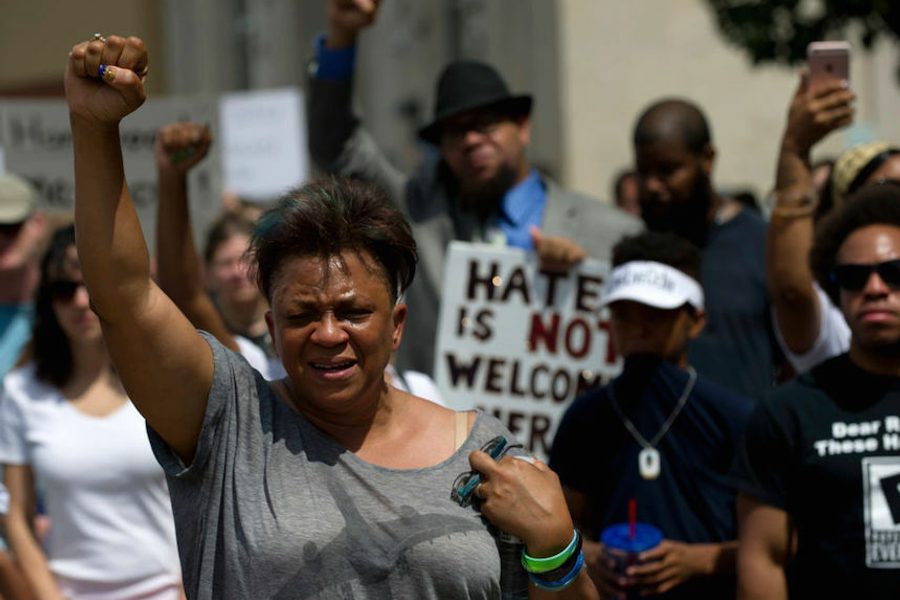Heed the Lesson of 1932: Only Left Unity Can Defeat the Racist Right
We have our differences, but we also have the numbers.
Joel Bleifuss

On August 12 in Charlottesville, Va., hundreds of white nationalists, Klansmen and neo-Nazis, among whom President Donald Trump said were “some very fine people,” gathered, ostensibly to protest the removal of a statue of Confederate Gen. Robert E. Lee, but then initiated two days of terror in which one counterprotestor was killed and many injured.
Trump, revealing his fascist colors, condemned “both sides” as equally responsible for the violence. He added, “Nobody wants to say that.” Somebody, however, did want to hear that. David Duke, the one-time Imperial Wizard of the Ku Klux Klan and former Louisiana GOP state rep, tweeted: “Thank you President Trump for your honesty & courage to tell the truth about Charlottesville & condemn the leftist terrorists in BLM/Antifa.”
In other words, the Unite the Right rally was a yuge success. Thanks to Trump, white supremacists are free to dispense of the winks and dog whistles of recent decades. They are once again part of the national conversation.
Putting Klansmen and neo-Nazis on the same level as fighters for racial justice and counter-protesters shifts the political spectrum rightward. Republican leaders, like House Speaker Paul Ryan and Senate Majority Leader Mitch McConnell, offered mild critiques of the President’s rhetoric, winning praise from pundits. Meanwhile, the GOP consolidates its power through racist laws that suppress voter participation — legislation Republicans have now introduced in 31 states.
Polls indicate that most Americans are alarmed by Trump; the man lost the popular vote, after all. But will the opprobrium of the majority be enough to stop his program? In 1932, Hitler came to power in Germany with only 33 percent of the vote, winning 196 seats (a plurality) in the Reichstag. The left parties, together, had 221 seats and could have formed a government — had not the German Communists obeyed orders from Comintern to demonize the “social fascists,” i.e. the rival Social Democrats. It was only after Nazi Germany’s imperial designs threatened the Soviet Union that Moscow instructed Communist parties to form fronts against fascism with other left parties.
In short, fascists were able to consolidate power in Germany because they exploited a division within the Left. Today, in the United States, the only obstacle to wresting power from an evermore-extreme Right would be a collective inability of progressive forces to unite against this emboldened enemy. The earnest liberals of the Women’s March, antifa, the growing movement for Black lives, the Berniecrats, the campus theorists, the democratic socialists, et al., must soberly assess this perilous moment, pause their Twitter wars, and unite against the white supremacists, the vote-suppressors, the GOP mega-donors and the religious hucksters that make up Trump’s “movement.”
Those of us on the Left do not need to paper over our important distinctions or suppress the discussion of controversies. Nevertheless, Left unity against the racist Right will be essential to protecting vulnerable communities, and to halting the expansion of Trumpism in the 2018 and 2020 election cycles.
We must stand shoulder to shoulder with those who were the objects of the hate we saw in Charlottesville — Blacks, immigrants, Jews and others who don’t conform to the white nationalist ideal. The terror that was directed at them is a not-so-distant cousin of the state-sanctioned violence municipal police and ICE agents visit upon Black and Latino communities every day. These communities are already on the front lines. Their fight is ours.
We have our differences, but we also have the numbers. United, we will win.
Joel Bleifuss, a former director of the Peace Studies Program at the University of Missouri-Columbia, is the editor & publisher of In These Times, where he has worked since October 1986.









